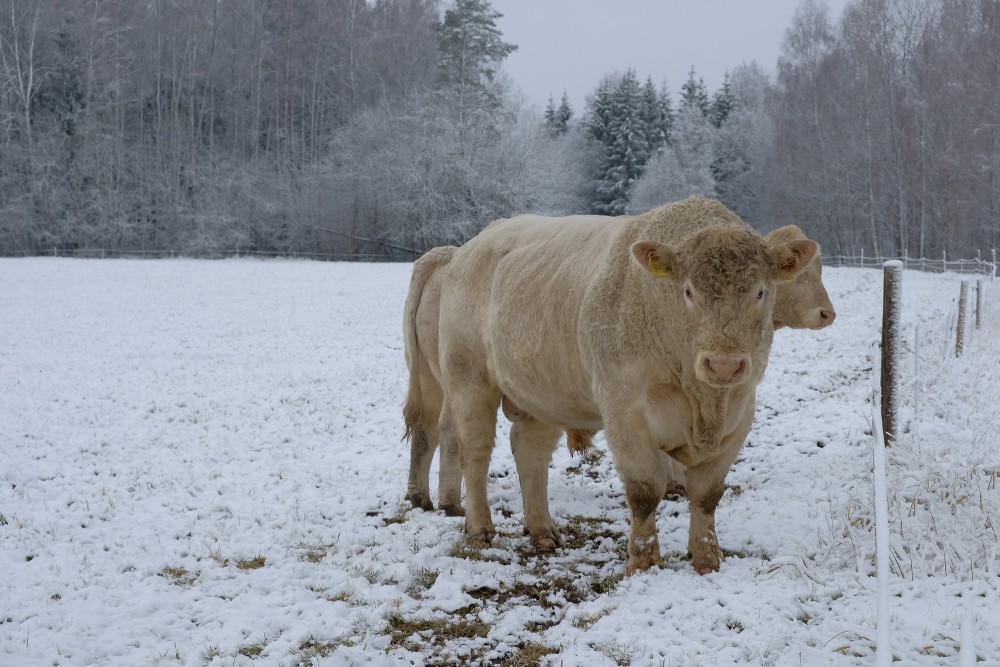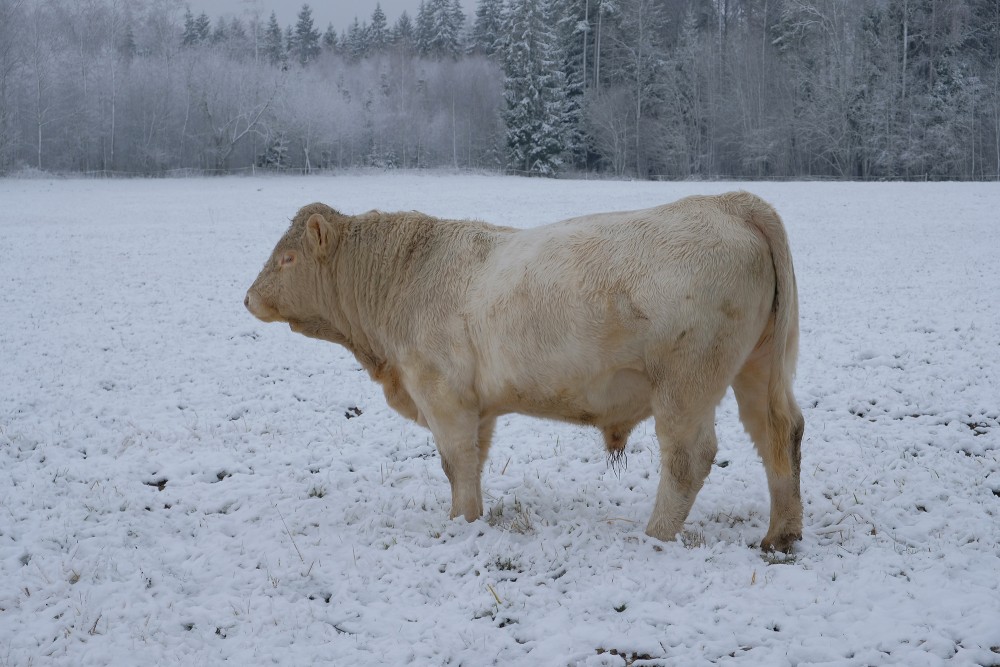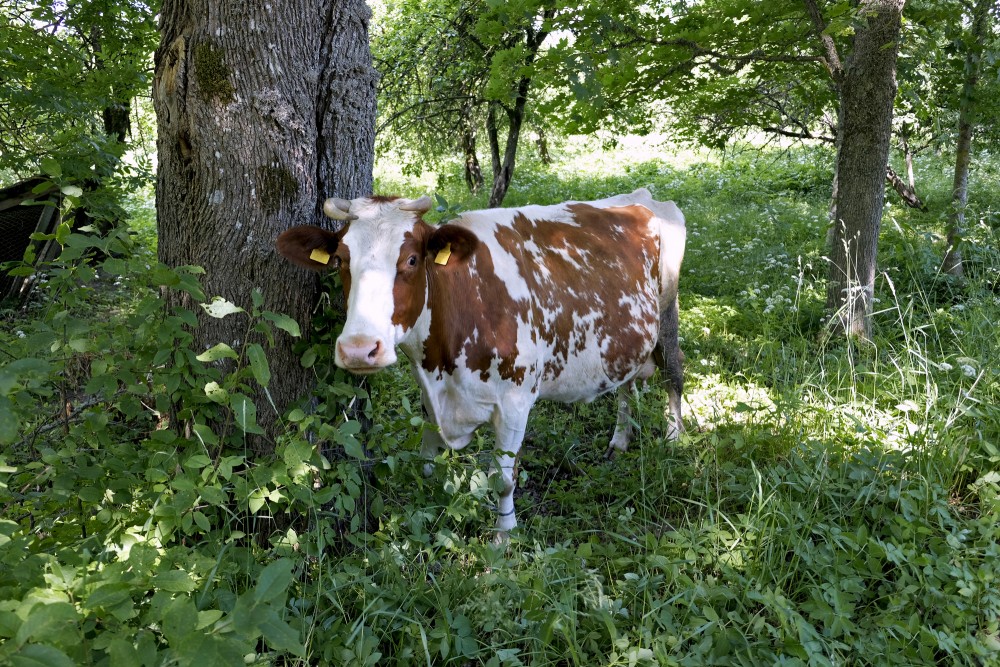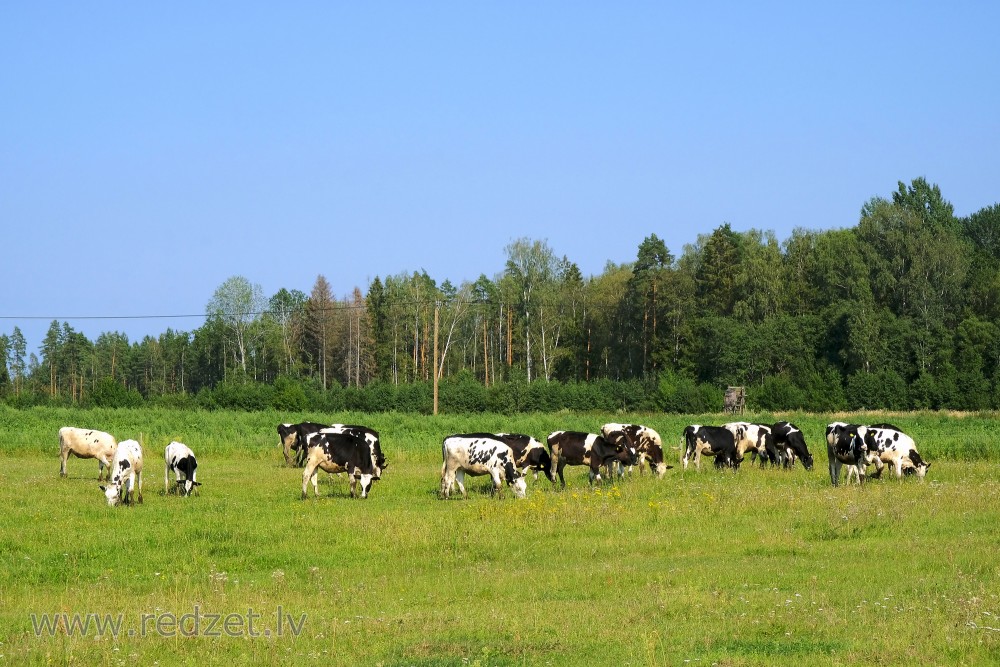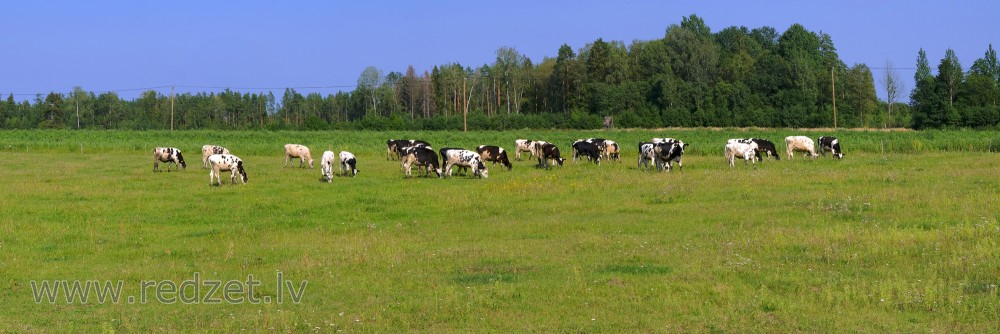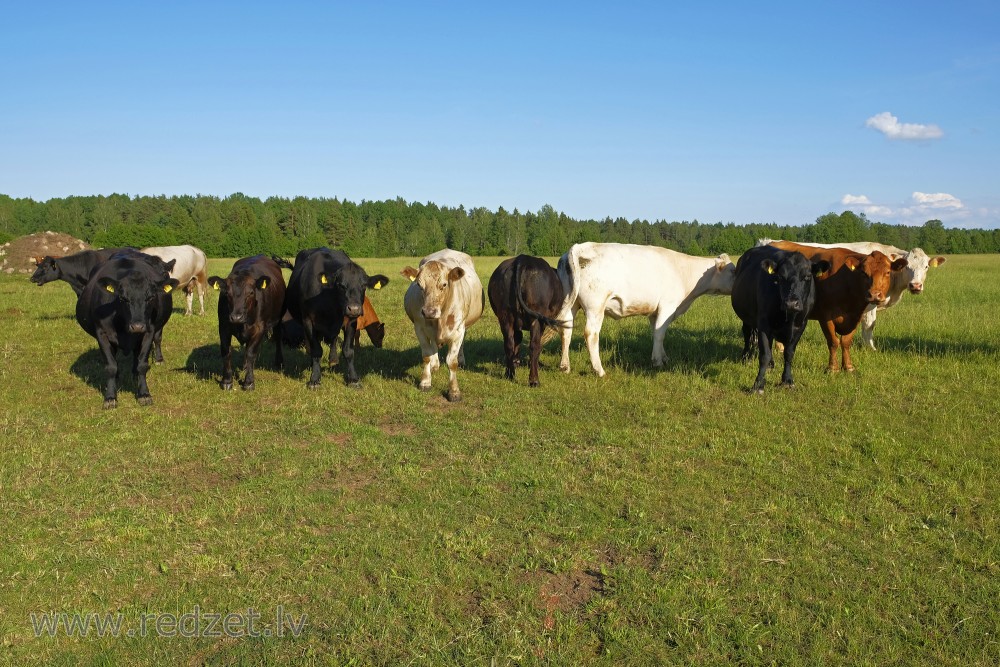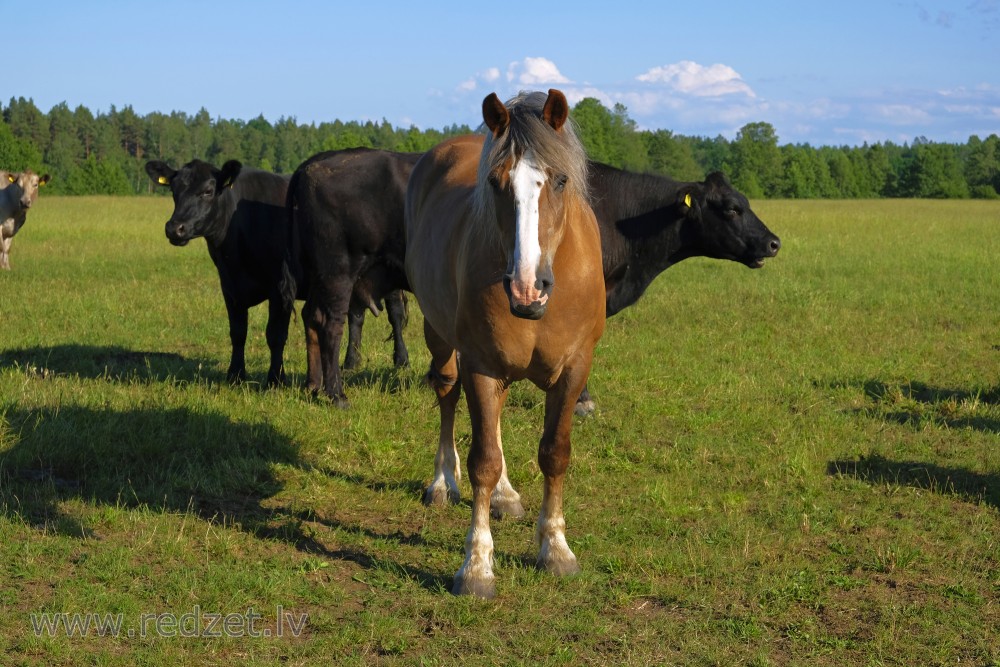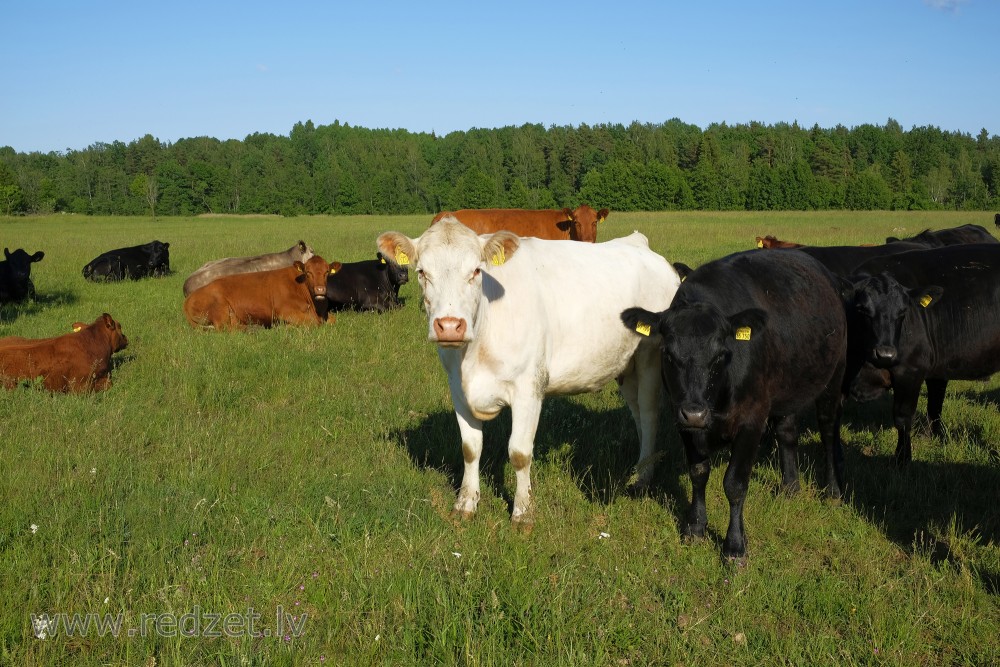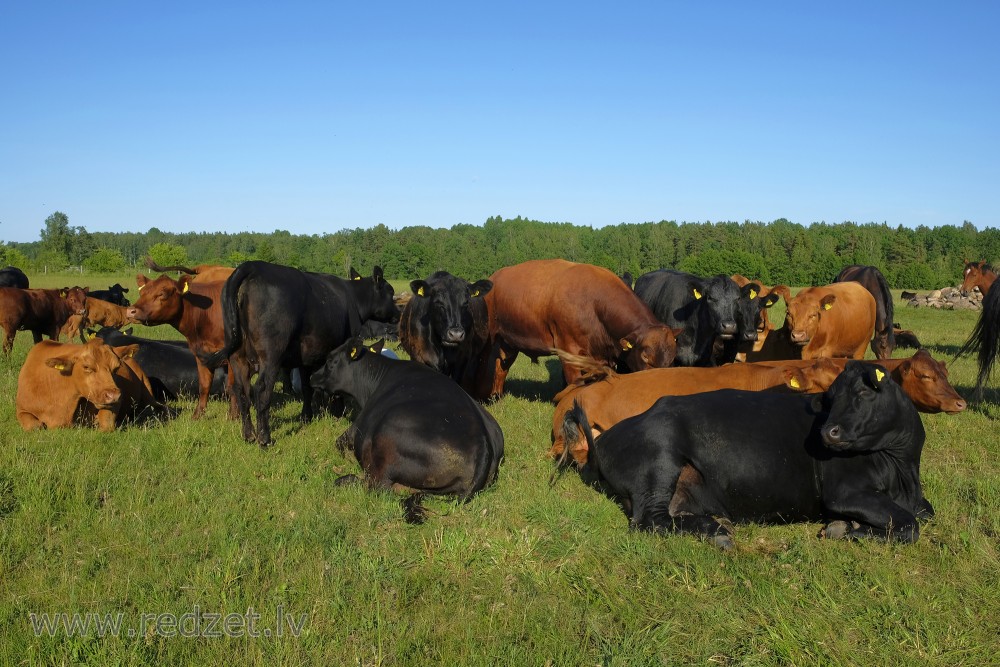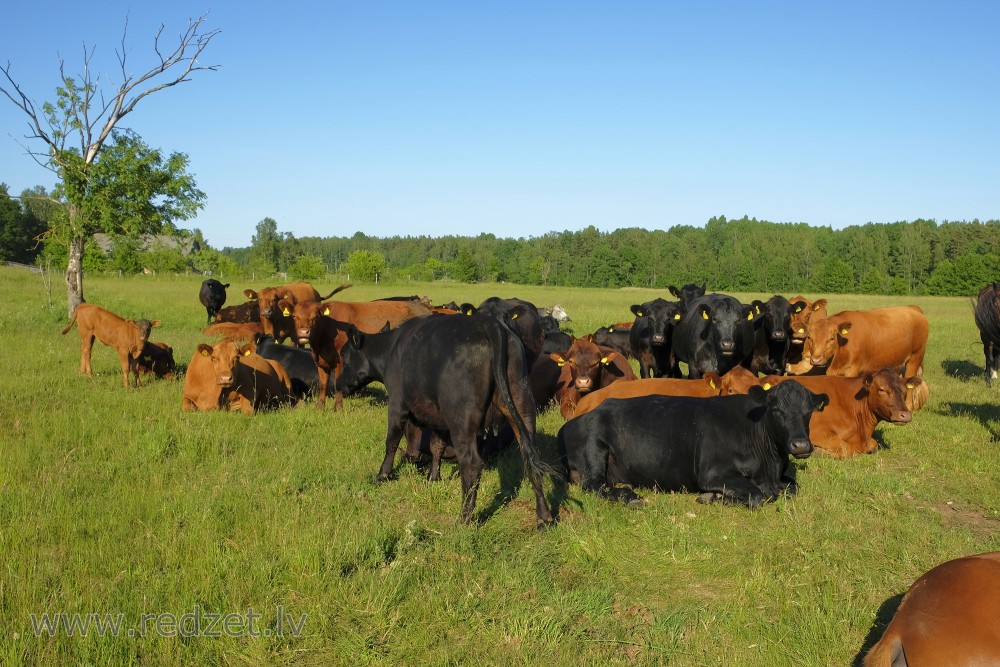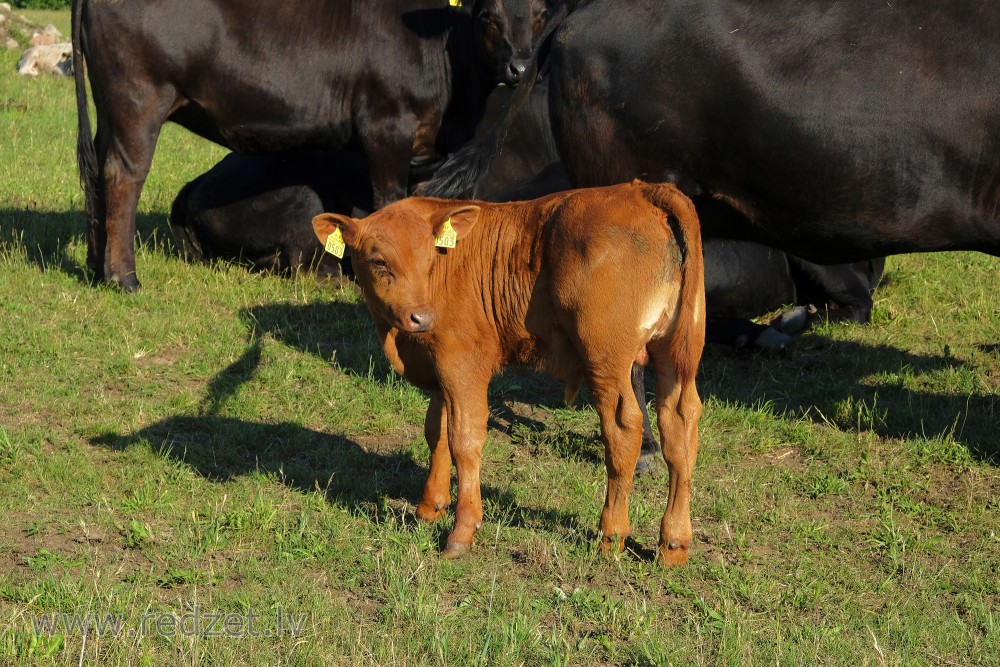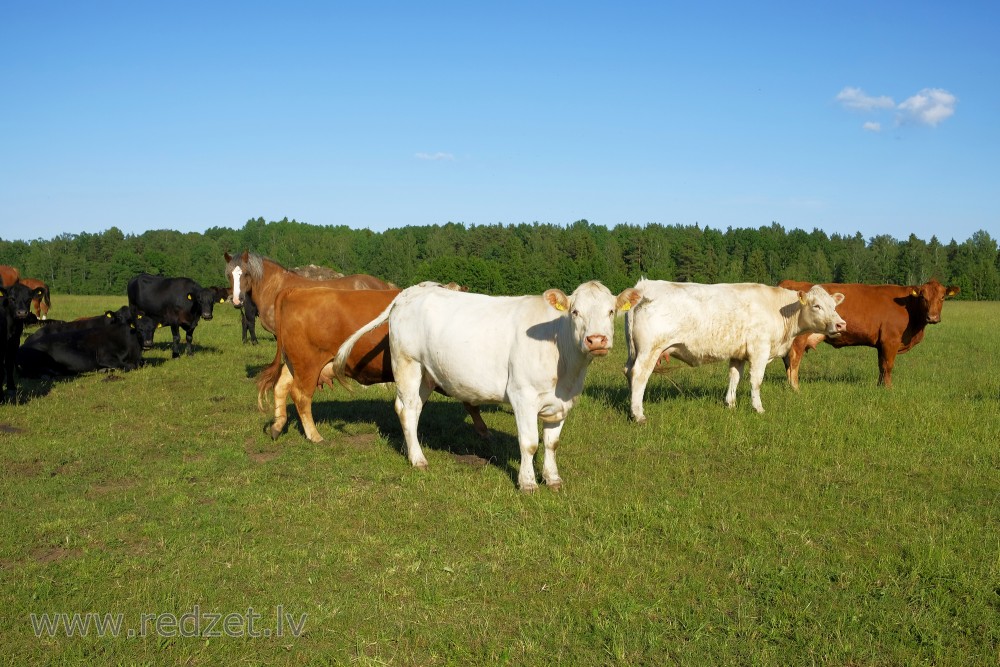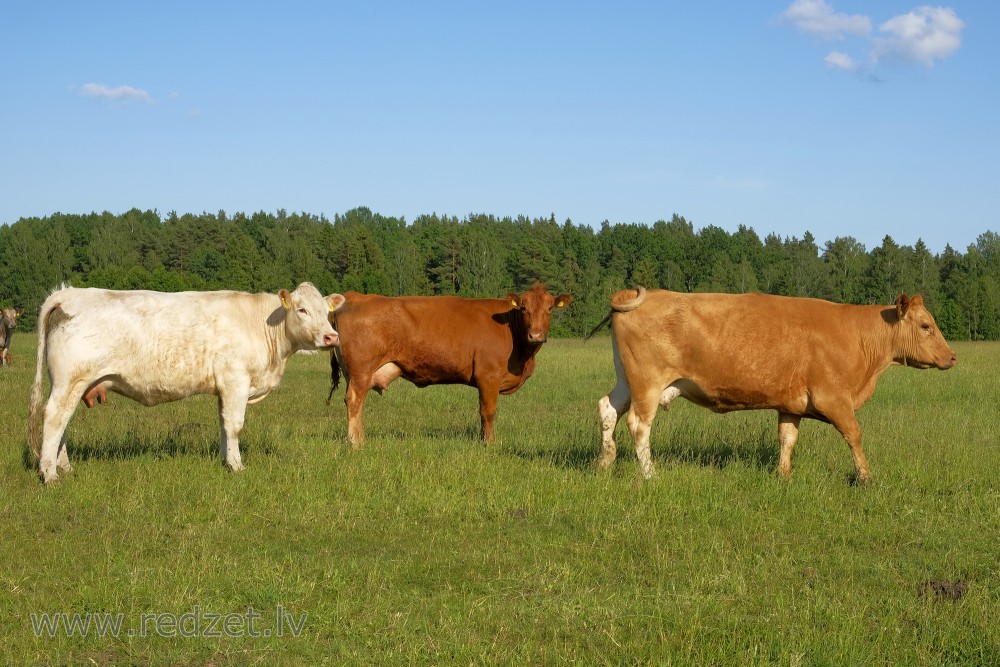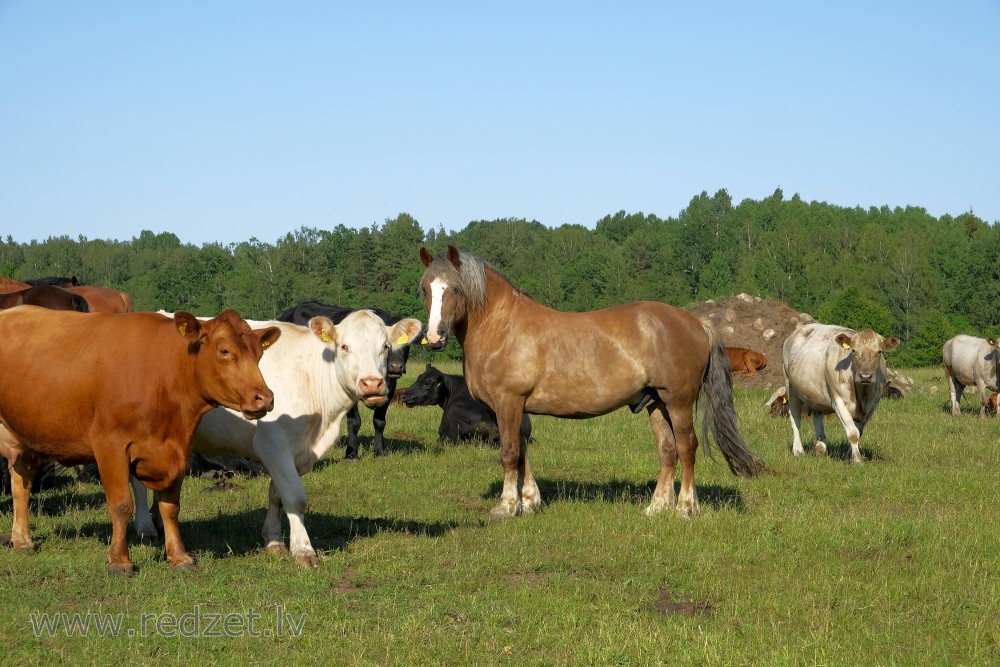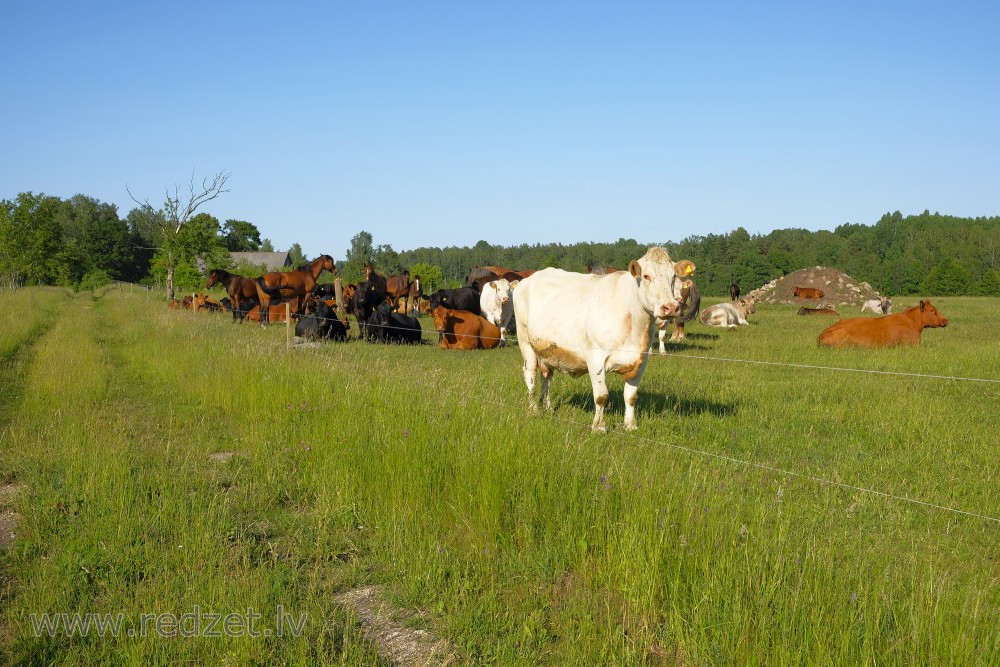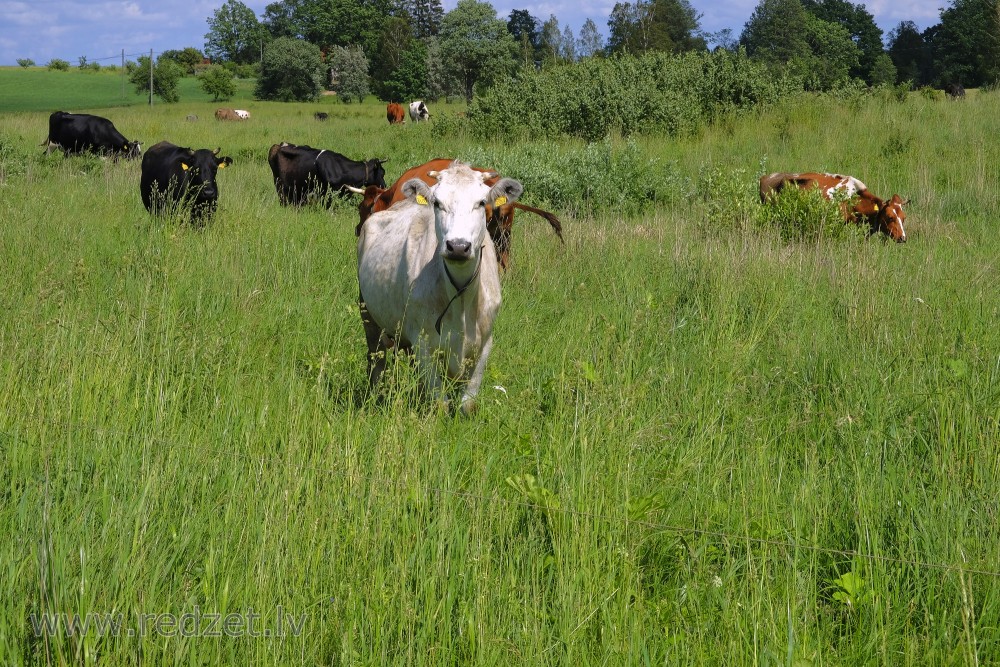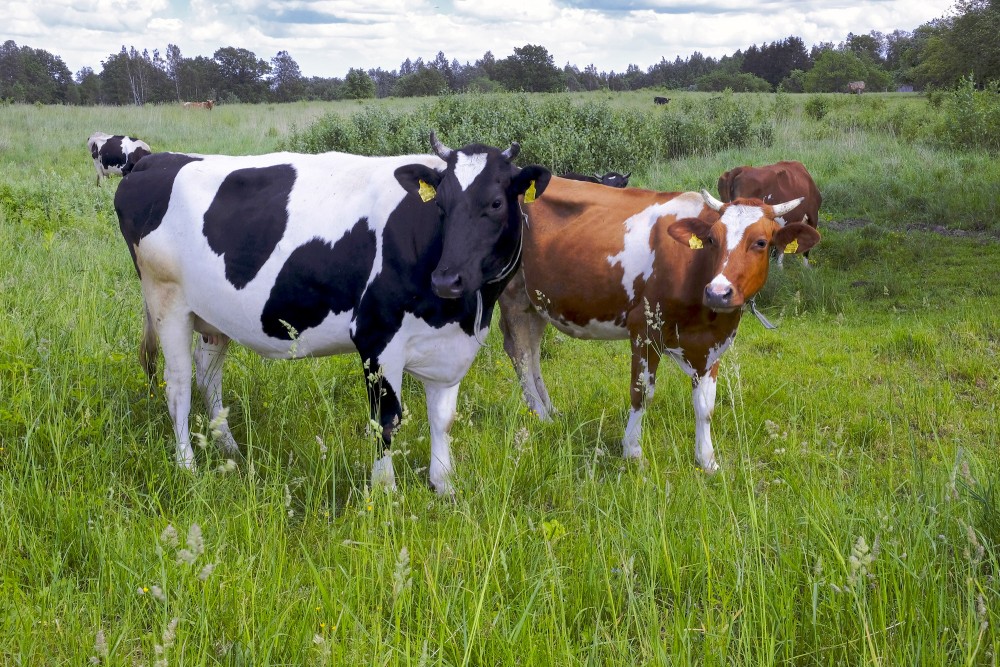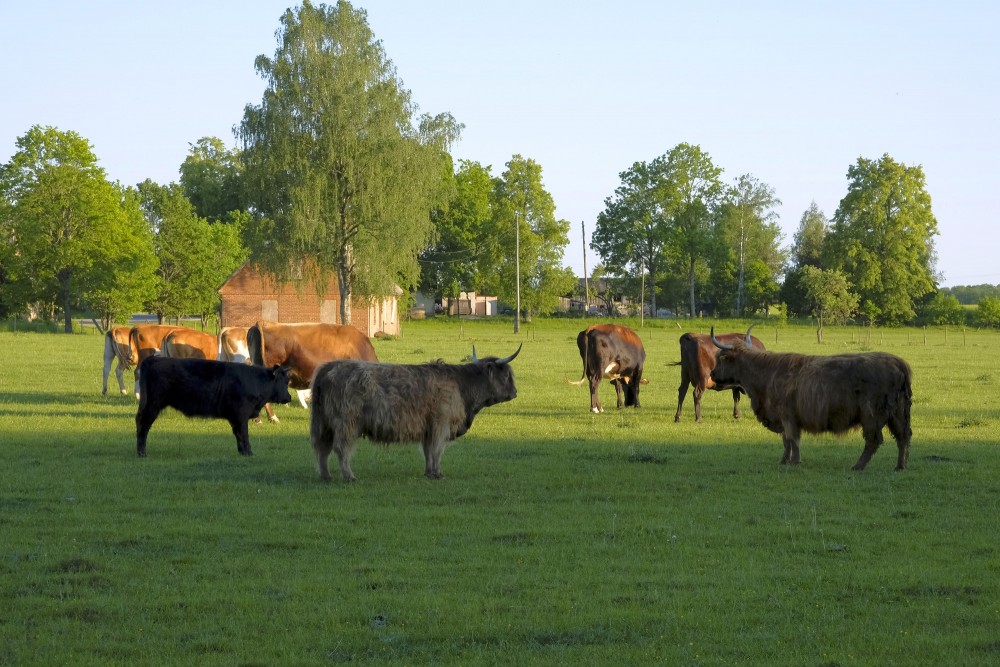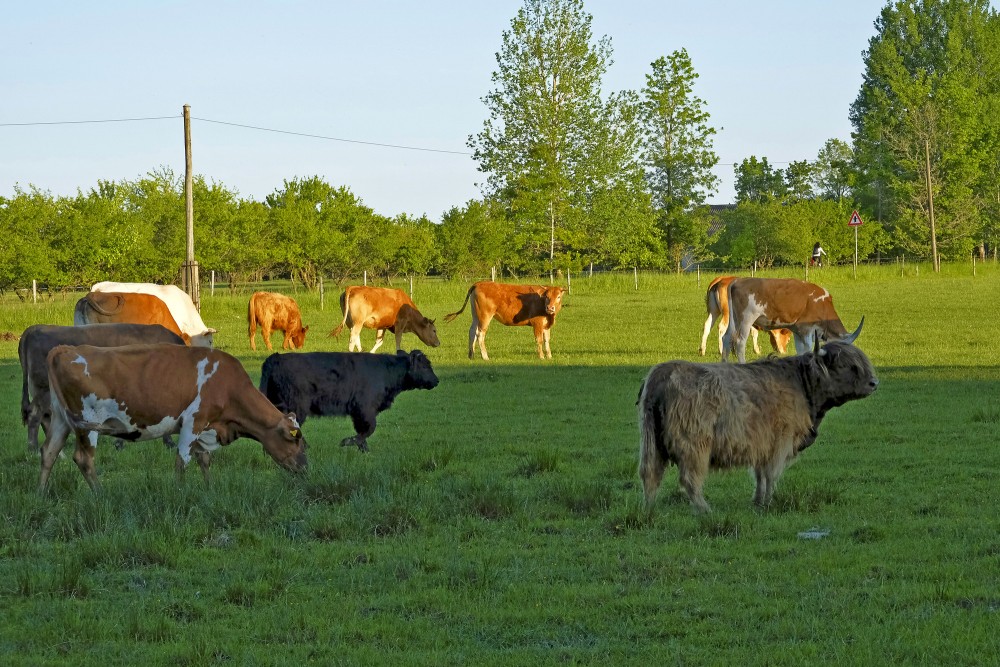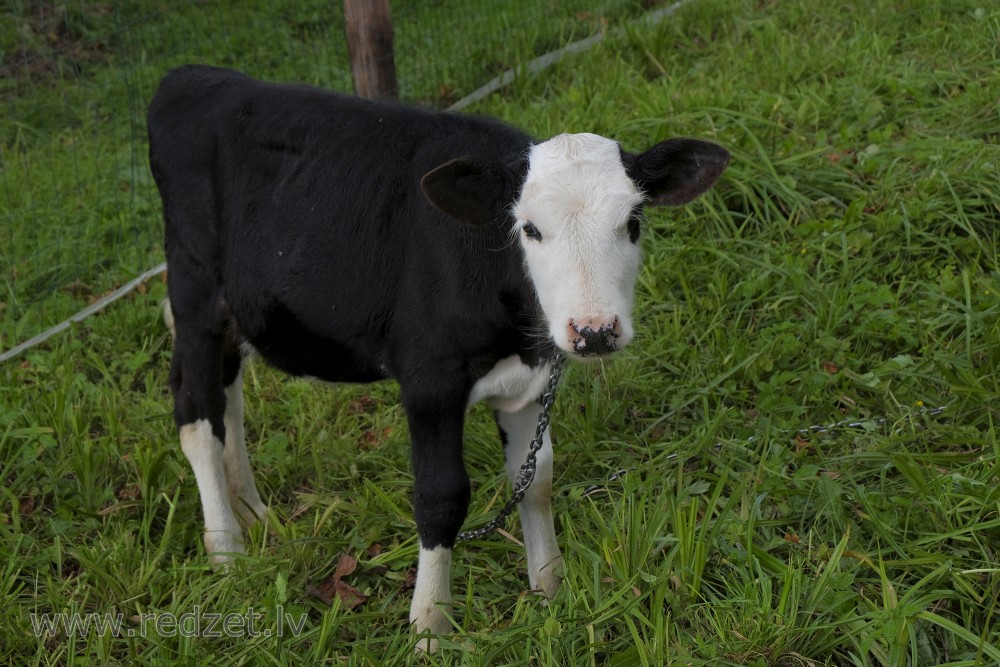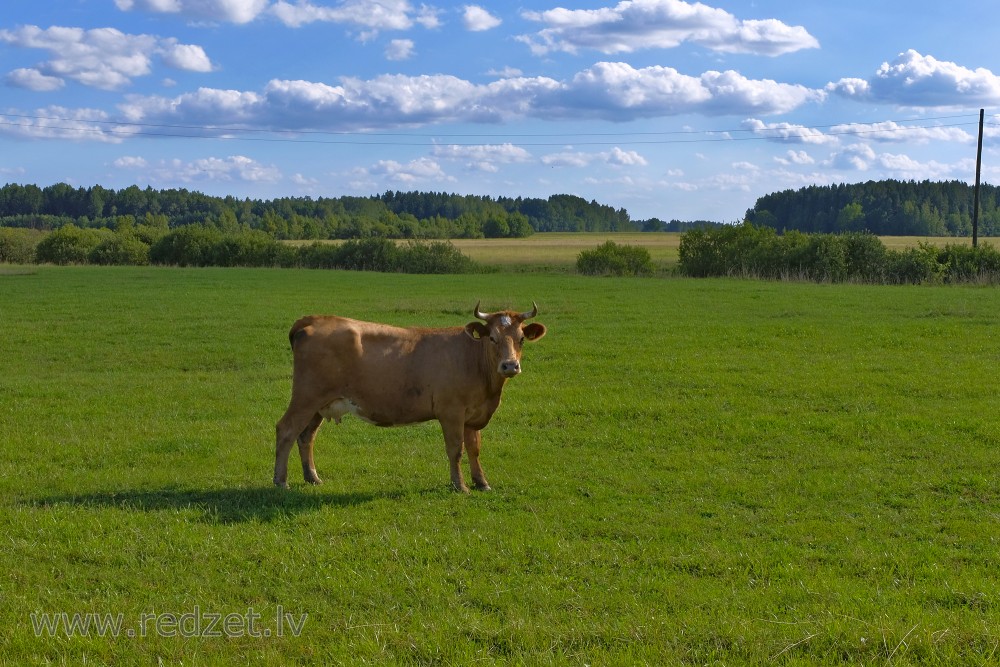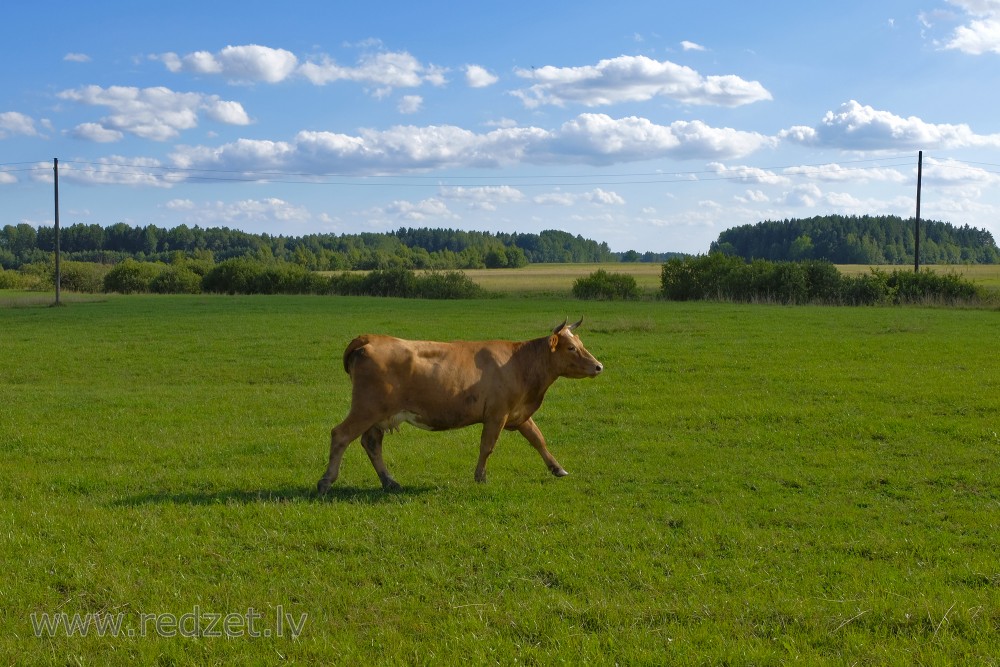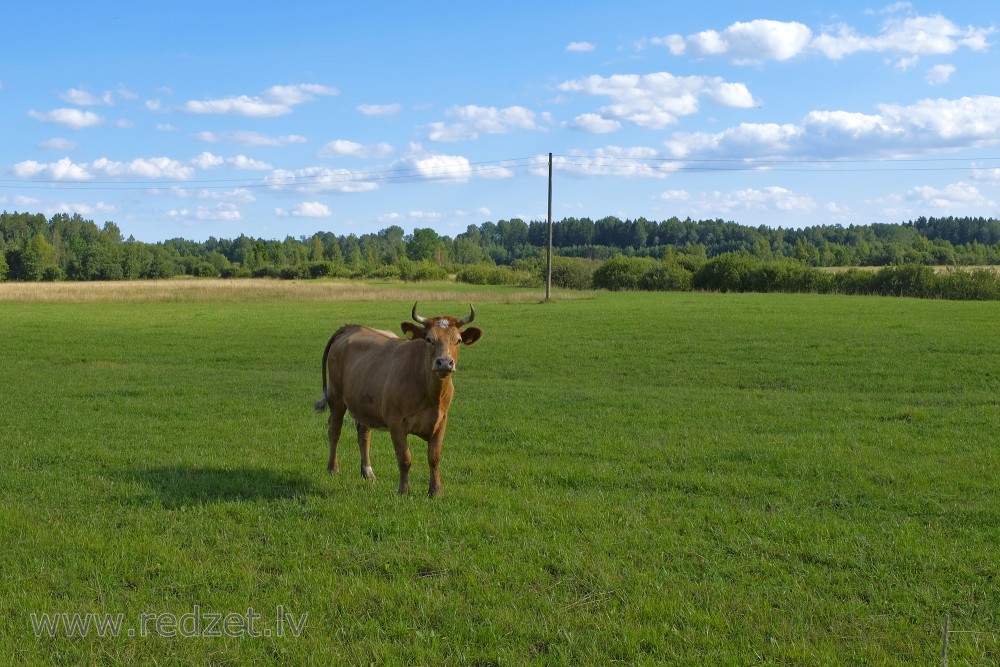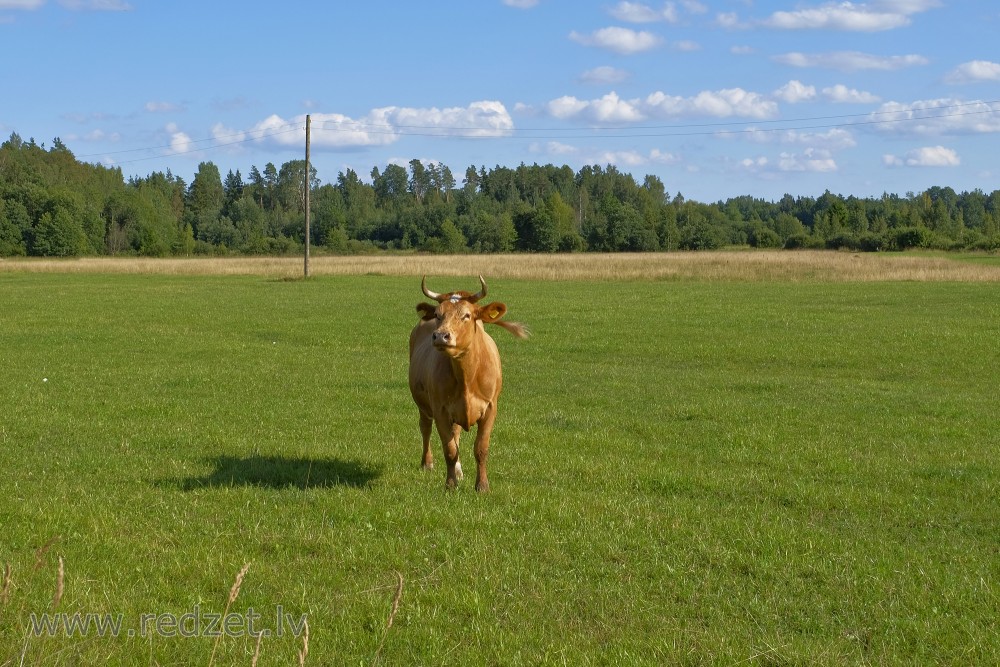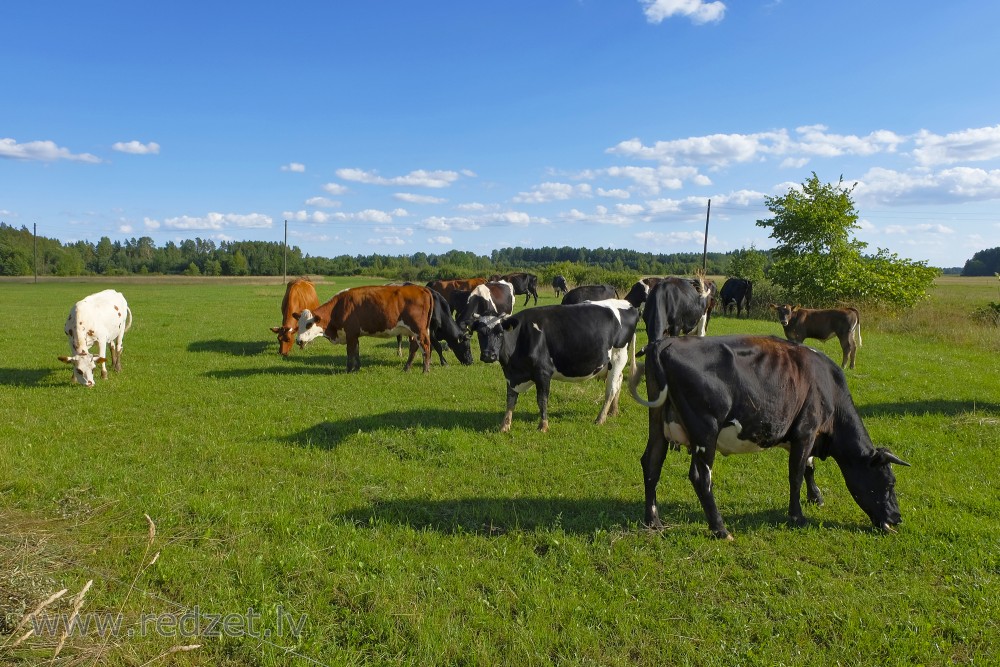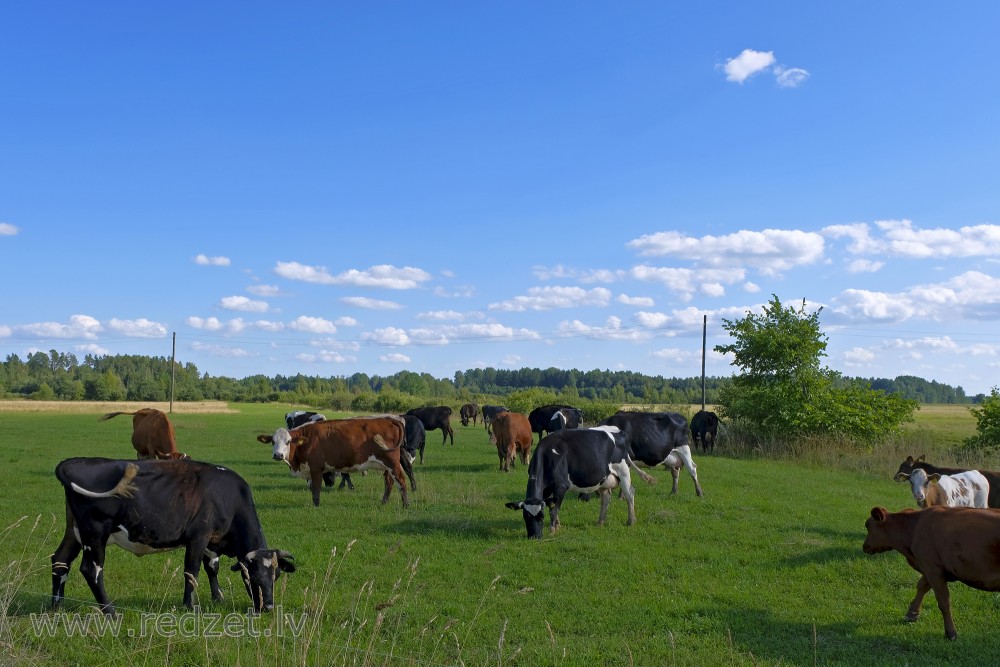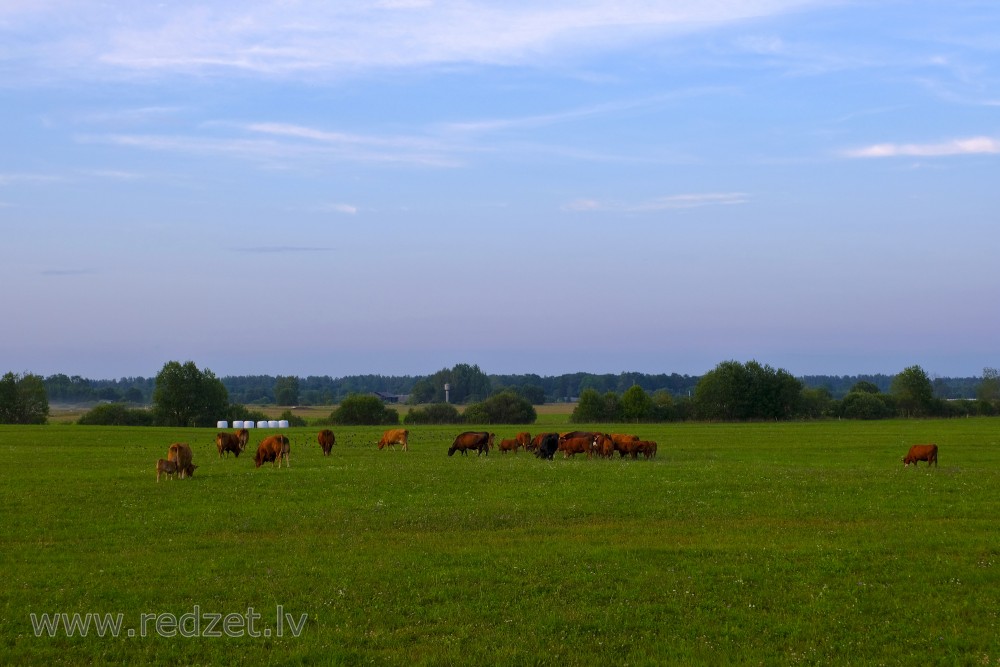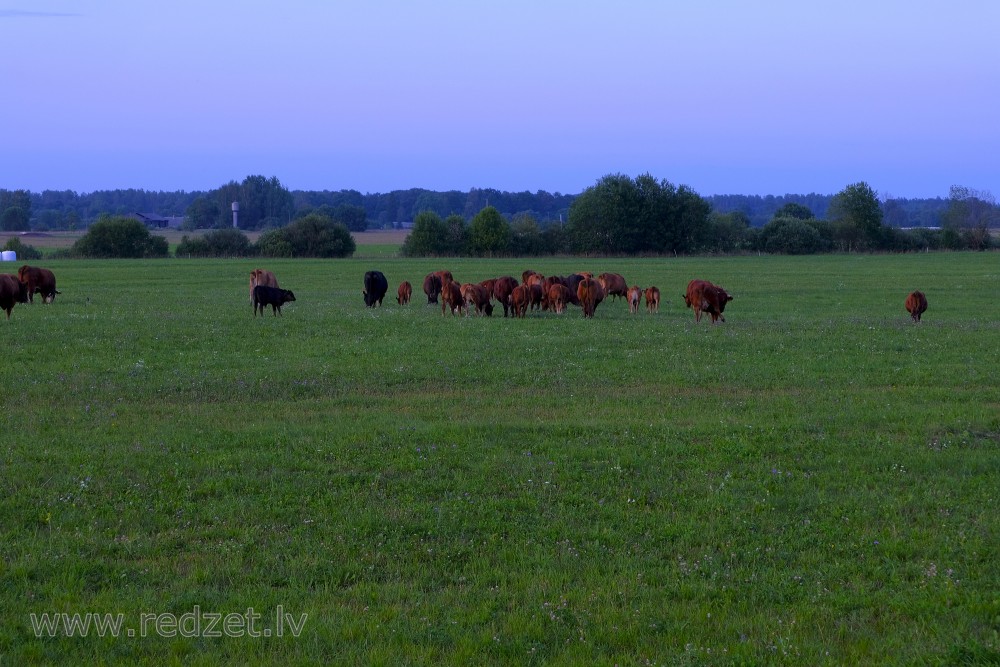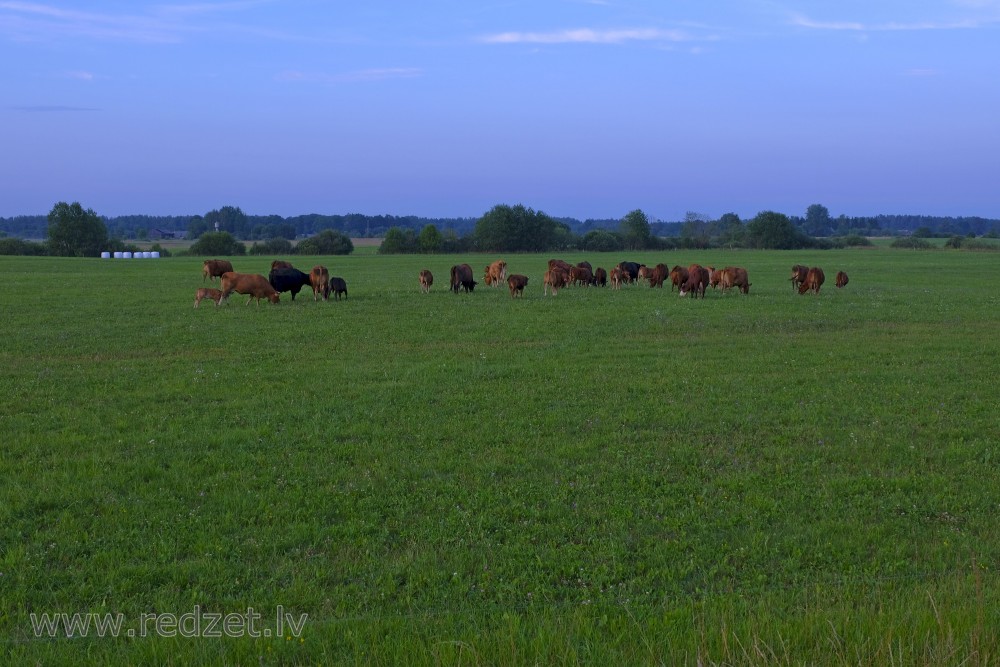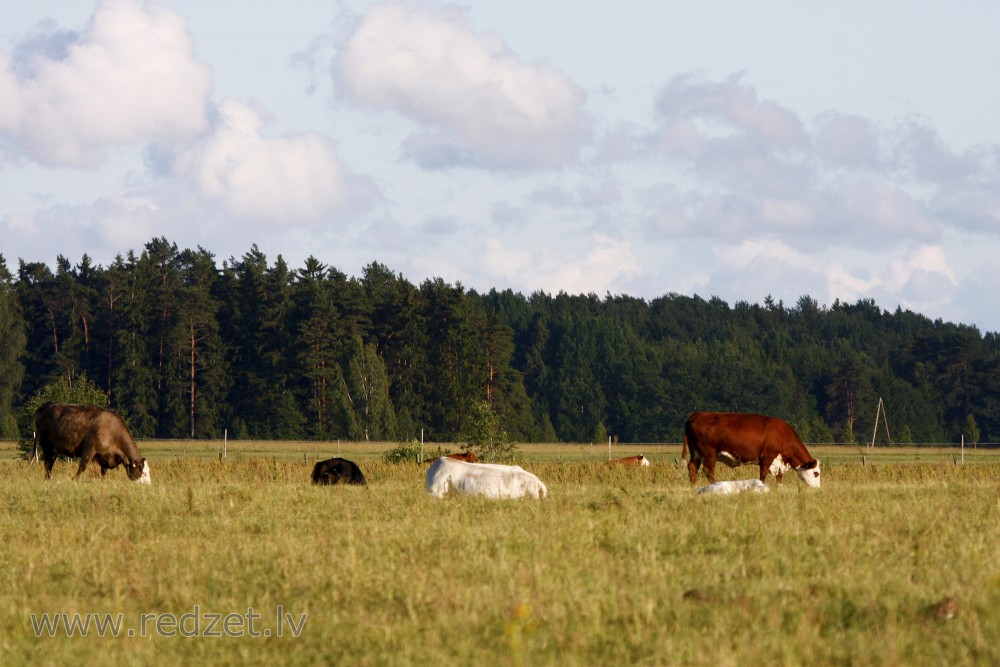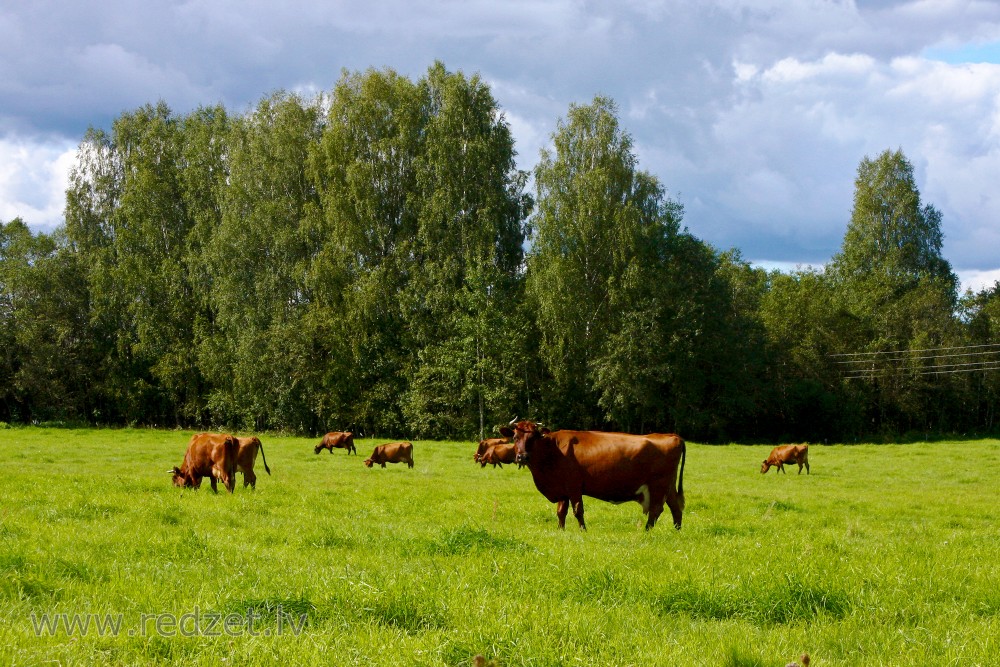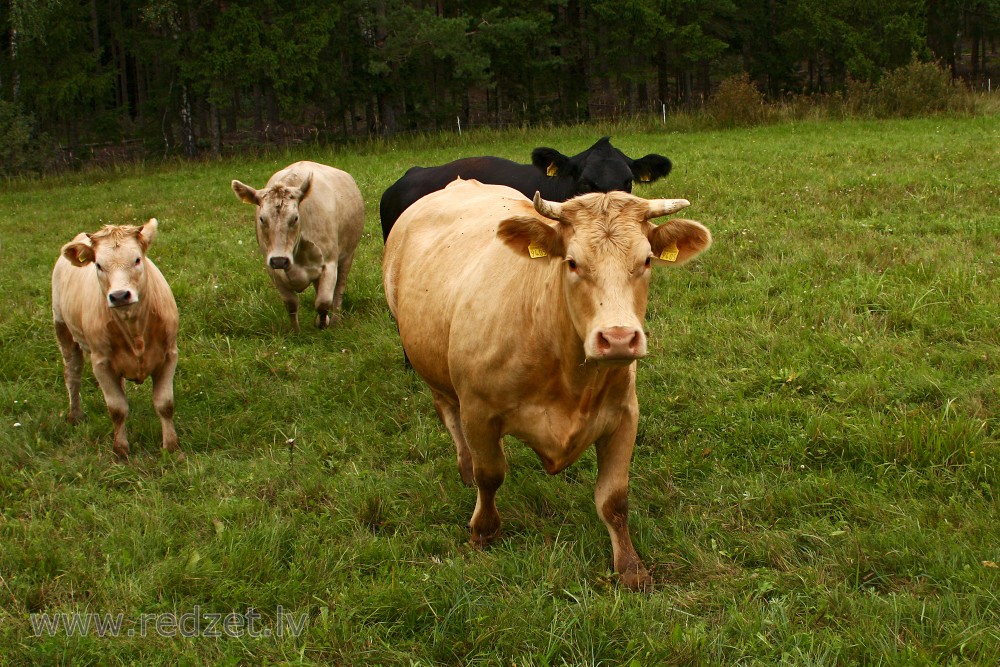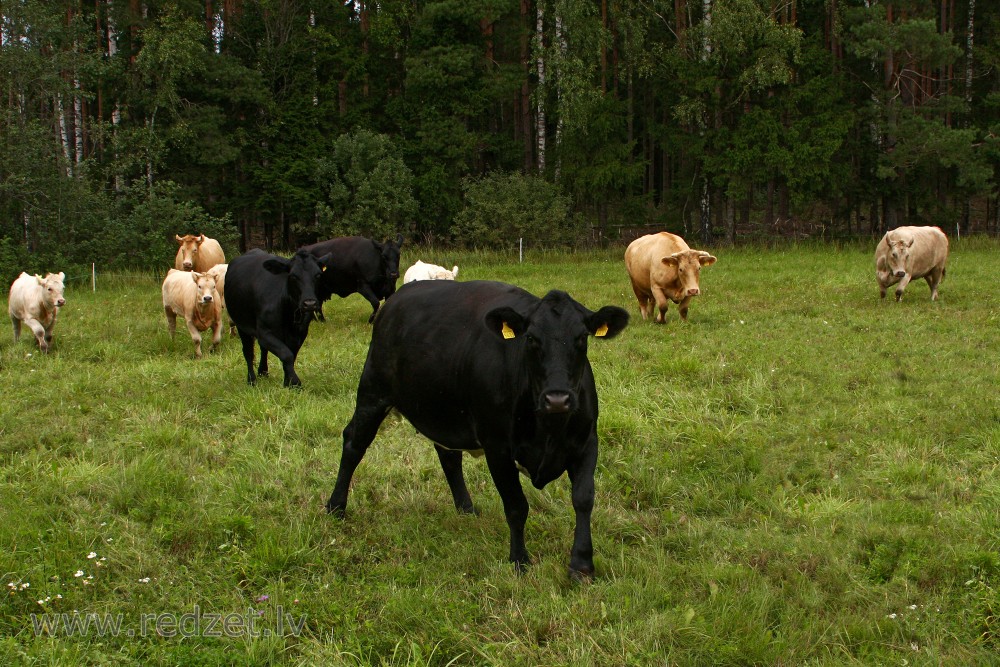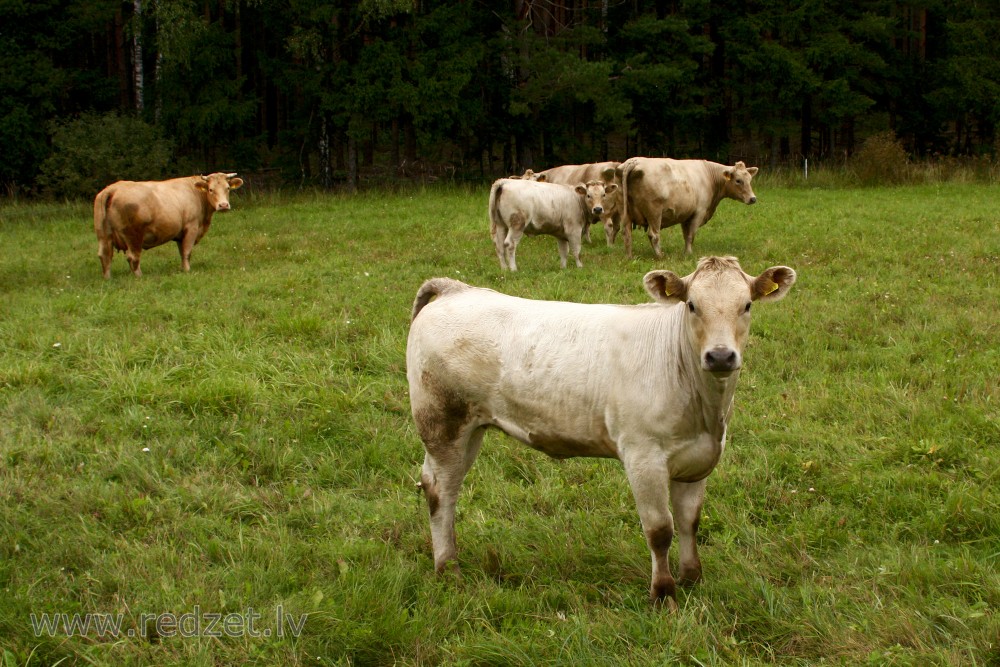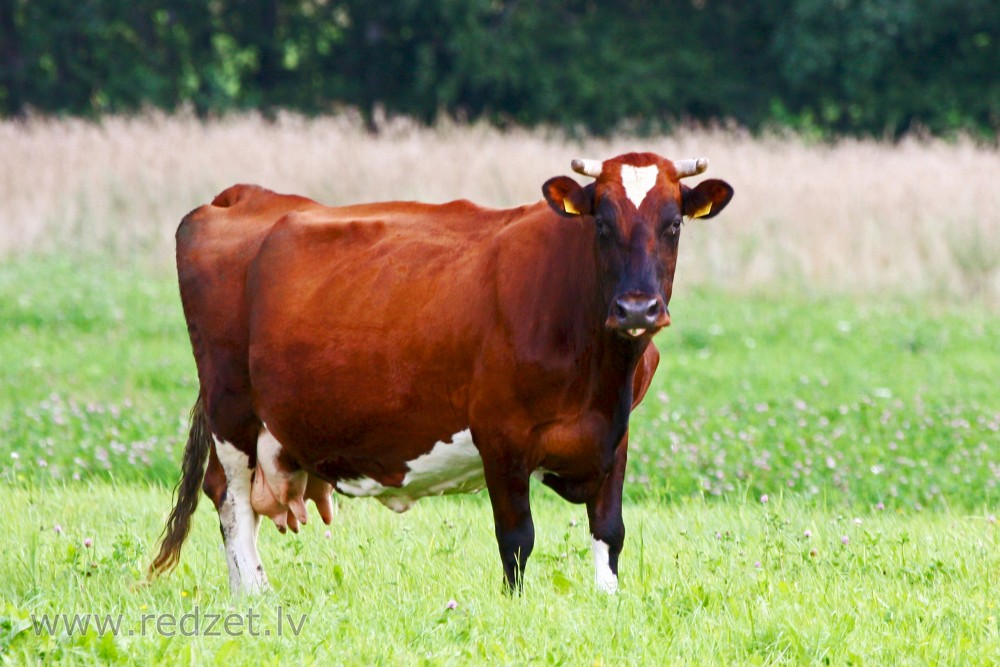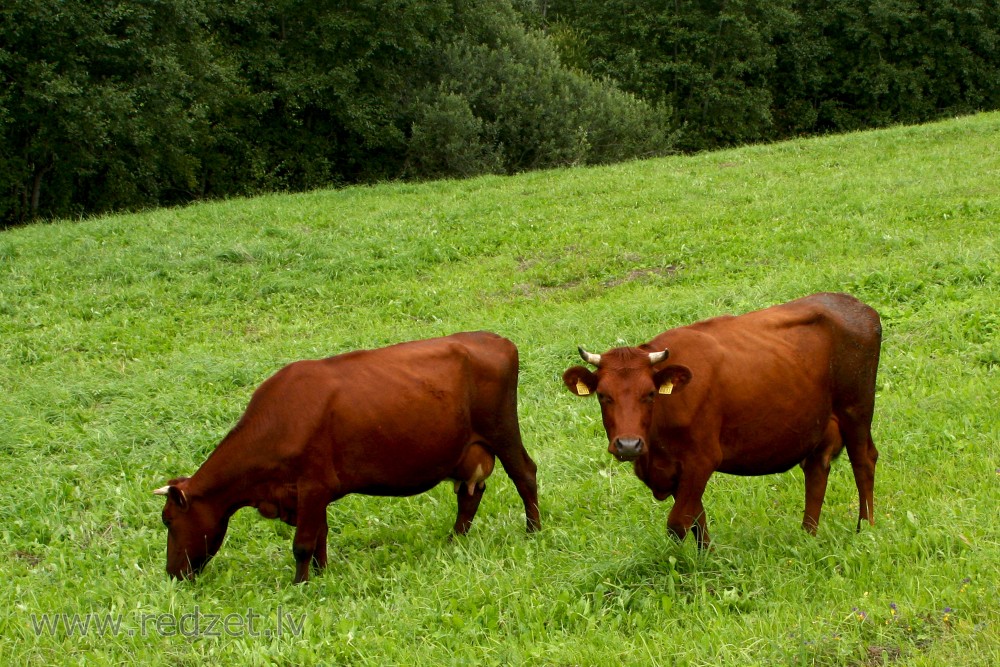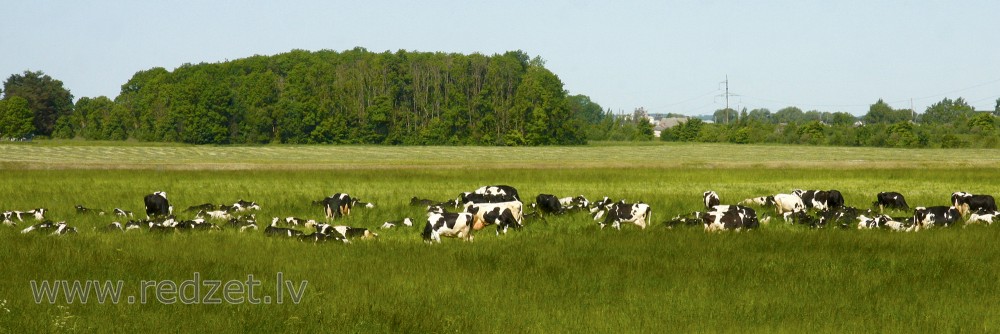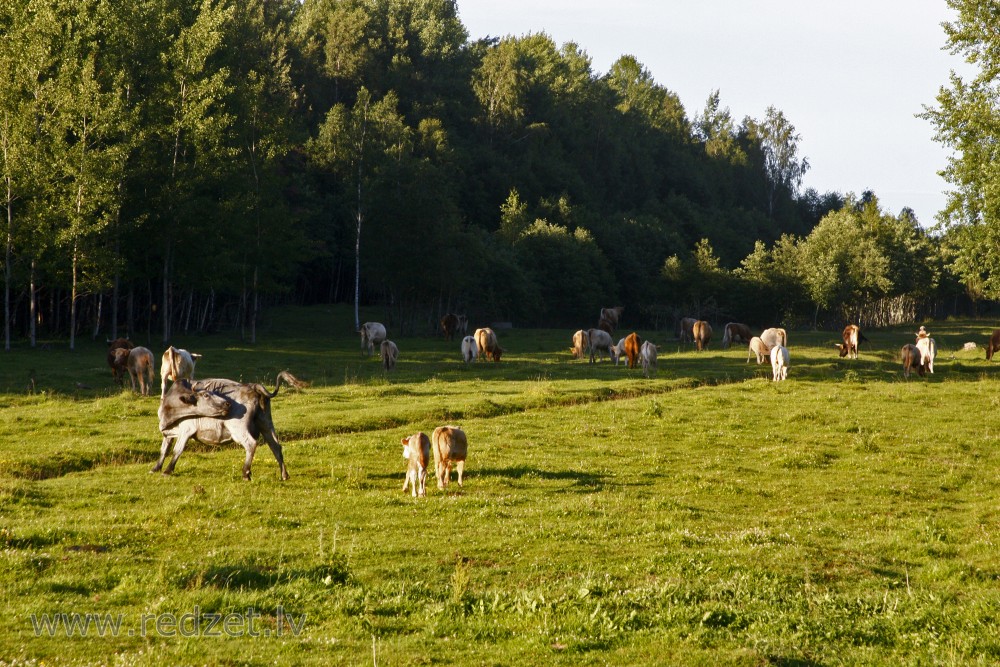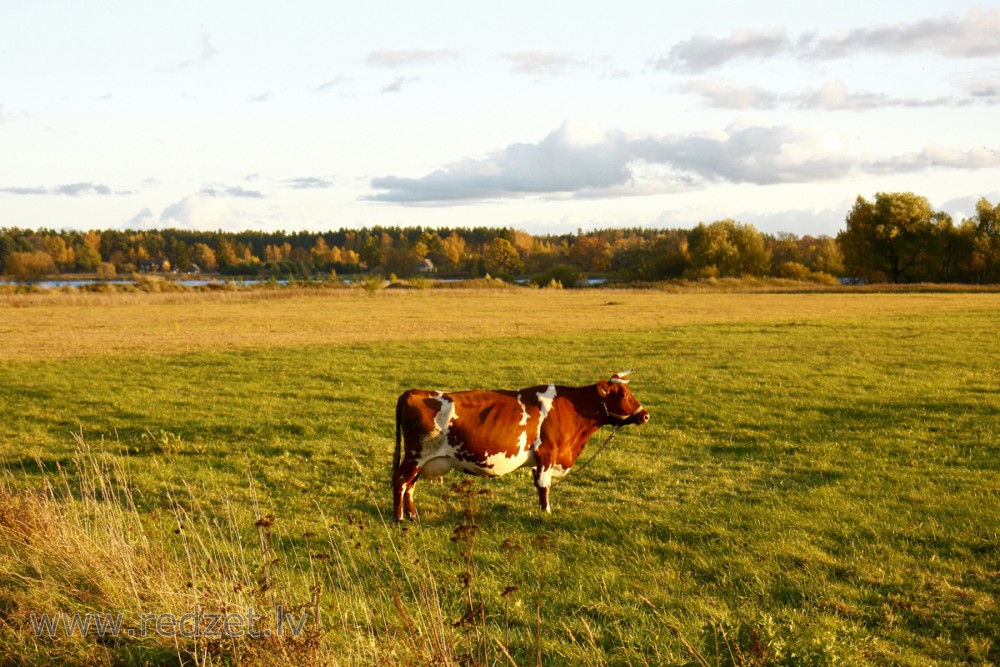Cattle
Cattle - colloquially cows - are the most common type of large domesticated ungulates. They are a prominent modern member of the subfamily Bovinae, are the most widespread species of the genus Bos, and are most commonly classified collectively as Bos taurus.
Cattle are commonly raised as livestock; for meat (beef or veal, see beef cattle), for milk (see dairy cattle), and for hides, which are used to make leather. They are used as riding animals and draft animals (oxen or bullocks, which pull carts, plows and other implements). Another product of cattle is dung, which can be used to create manure or fuel. In some regions, such as parts of India, cattle have significant religious meaning. Cattle, mostly small breeds such as the miniature zebu, are kept as pets.
Around 10,500 years ago, cattle were domesticated from as few as 80 progenitors in southeast Turkey. According to an estimate from 2011, there are 1.4 billion cattle in the world. In 2009, cattle became one of the first livestock animals to have a fully mapped genome. Some consider cattle the oldest form of wealth, and cattle raiding consequently one of the earliest forms of theft.
Taxonomy
Cattle were originally identified as three separate species: Bos taurus, the European or "taurine" cattle (including similar types from Africa and Asia); Bos indicus, the zebu; and the extinct Bos primigenius, the aurochs. The aurochs is ancestral to both zebu and taurine cattle. These have been reclassified as one species, Bos taurus, with three subspecies: Bos taurus primigenius, Bos taurus indicus, and Bos taurus taurus.
Complicating the matter is the ability of cattle to interbreed with other closely related species. Hybrid individuals and even breeds exist, not only between taurine cattle and zebu (such as the sanga cattle, Bos taurus africanus), but also between one or both of these and some other members of the genus Bos – yaks (the dzo or yattle), banteng, and gaur. Hybrids such as the beefalo breed can even occur between taurine cattle and either species of bison, leading some authors to consider them part of the genus Bos, as well. The hybrid origin of some types may not be obvious – for example, genetic testing of the Dwarf Lulu breed, the only taurine-type cattle in Nepal, found them to be a mix of taurine cattle, zebu, and yak. However, cattle cannot be successfully hybridized with more distantly related bovines such as water buffalo or African buffalo.
The aurochs originally ranged throughout Europe, North Africa, and much of Asia. In historical times, its range became restricted to Europe, and the last known individual died in Mazovia, Poland, in about 1627. Breeders have attempted to recreate cattle of similar appearance to aurochs by crossing traditional types of domesticated cattle, creating the Heck cattle breed.
Etymology
The noun cattle (which is treated as a plural and has no singular) encompasses both sexes. The singular, cow, unambiguously means the female, the male being bull. The plural feminine form cows is sometimes used colloquially to refer to both sexes collectively, as e.g. in a herd, but that usage can be misleading as the speaker's intent may indeed be just the females. The bovine species per se is clearly dimorphic.
Cattle did not originate as the term for bovine animals. It was borrowed from Anglo-Norman catel, itself from medieval Latin capitale 'principal sum of money, capital', itself derived in turn from Latin caput 'head'. Cattle originally meant movable personal property, especially livestock of any kind, as opposed to real property (the land, which also included wild or small free-roaming animals such as chickens — they were sold as part of the land). The word is a variant of chattel (a unit of personal property) and closely related to capital in the economic sense. The term replaced earlier Old English feoh 'cattle, property', which survives today as fee (cf. German: Vieh, Dutch: vee, Gothic: faihu).
The word "cow" came via Anglo-Saxon cū (plural cȳ), from Common Indo-European gʷōus (genitive gʷowés) = "a bovine animal", compare Persian: gâv, Sanskrit: go-, Welsh: buwch. The plural cȳ became ki or kie in Middle English, and an additional plural ending was often added, giving kine, kien, but also kies, kuin and others. This is the origin of the now archaic English plural, "kine". The Scots language singular is coo or cou, and the plural is "kye".
In older English sources such as the King James Version of the Bible, "cattle" refers to livestock, as opposed to "deer" which refers to wildlife. "Wild cattle" may refer to feral cattle or to undomesticated species of the genus Bos. Today, when used without any other qualifier, the modern meaning of "cattle" is usually restricted to domesticated bovines.
en.wikipedia.org
Cattle, domesticated bovine farm animals that are raised for their meat, milk, or hides or for draft purposes. The animals most often included under the term are the Western or European domesticated cattle as well as the Indian and African domesticated cattle. However, certain other bovids such as the Asian water buffalo, the Tibetan yak, the gayal and banteng of Southeast Asia, and the plains bison of North America have also been domesticated or semidomesticated and are sometimes considered to be cattle.
In the terminology used to describe the sex and age of cattle, the male is first a bull calf and if left intact becomes a bull; if castrated he becomes a steer and in about two or three years grows to an ox. The female is first a heifer calf, growing into a heifer and becoming a cow. Depending on the breed, mature bulls weigh 450–1,800 kg (1,000–4,000 pounds) and cows 360–1,100 kg (800–2,400 pounds). Males retained for beef production are usually castrated to make them more docile on the range or in feedlots; with males intended for use as working oxen or bullocks, castration is practiced to make them more tractable at work. The use of cattle as commodities has been a point of philosophical contention throughout history, particularly regarding the raising of animals for food. Such issues are compounded by modern concerns about the ethics of industrial factory farming and the contribution of commercial meat production to global warming. (See also livestock farming: Cattle; vegetarianism.)
All modern domestic cattle are believed to belong to the species Bos taurus (European breeds such as Shorthorn and Jersey) or Bos indicus (Zebu breeds such as Brahman) or to be crosses of these two (such as Santa Gertrudis). Breeds as they are known today did not always exist, and many are of recent origin. The definition of a breed is difficult and inexplicit, although the term is commonly used and, in practice, well understood. It may be used generally to connote animals that have been selectively bred for a long time so as to possess distinctive identity in colour, size, conformation, and function, and these or other distinguishing characteristics are perpetuated in their progeny. Breeds have been established by generations of breeders aiming at the attainment and preservation of a particular type with its identifying characteristics. This is accomplished by working on the principle of “like begets like.” It is only in relatively recent times that the science of genetics, and particularly population genetics, has contributed to breeding. (See also animal breeding.)
There are many old established breeds in continental Europe—for example, the Charolais and Normande of France, the Holstein-Friesian of the Netherlands, and many others—but British breeds are of particular interest because of their influence in building up the vast herds that supply so much beef and dairy in other countries around the world.
www.britannica.com

